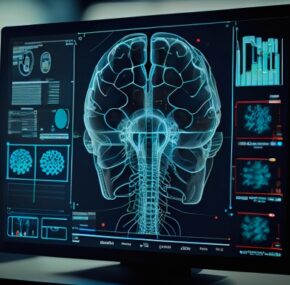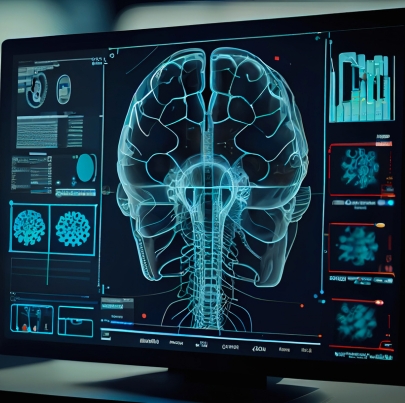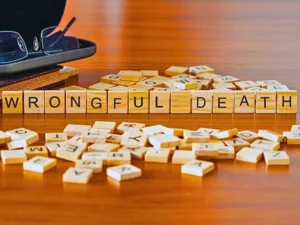Direct or indirect impact to the head is the primary cause of child traumatic brain injury (TBI). The impact may lead to skull fractures, concussions, serious brain injuries, bruises, and bumps. It can also cause lifelong impairment, affecting the child’s mental well-being and ability to learn.

Common accidents that cause TBIs in children include falls, getting struck by a blunt object, and violent incidents. You can tell whether your child suffered a traumatic brain injury through physical, emotional, and cognitive signs and symptoms.
Accidents That Cause Traumatic Brain Injuries in Children
Children can suffer a traumatic brain injury when they sustain a blow or other injury on their head. The level of damage may depend on the cause of the injury and impact force. Traumatic injuries to the head can occur through penetration, crushing of the skull, opening of the skull, or while the skull is closed. A hard object, like a knife or bullet, may force its way into the skull before reaching the brain. The skull may also be crushed by heavy impact or fractured with an object that exposes the brain to injury.
Some of the common accidents that might leave a child with a traumatic brain injury include:
Falls
A child can suffer traumatic brain injury after falling at home or in other locations. The child may fall on the playground, down the staircase, from a ladder, or off the bed. Falls are the leading cause of head injuries in children.
Parents and guardians should understand the common hazards of a fall accident to help prevent it. These hazards include beds without railings, raised landings, cluttered pathways, slippery bathtubs, and windows.
Children under five cannot control their balance and movement like older kids. As such, it’s common for them to fall. You can, however, reduce the chances of falls by monitoring your kid(s) closely.
Fall accidents usually result in several injuries that may require different levels of care. Broken bones, spine, back, neck, and head injuries require high-quality trauma care. They can worsen if left untreated, causing long-term consequences.
If your child has trouble breathing or swelling in the head after a fall, rush him or her to the hospital. Other signs, such as loss of memory or consciousness, suggest that your child has suffered a traumatic brain injury.
Getting Struck Against or by an Object
Children can get struck by objects when playing. The child might not suffer a serious injury if the accidental impact is minimal. But, if the impact is significant, it may expose the child to severe head injuries.
An accident may occur if the child walks into a piece of furniture, door, or wall. It can also happen when an object hits the child from above. If the impact on the head is severe, signs of an injury may include a ruptured skull, swelling, bleeding, and a loss of consciousness.
Whatever the cause, it’s important to get trauma care and treatment for your child if he or she suffers from a head, spine, back, or neck injury after an accident. If your child was pinned down against or under something during an accident, you should also seek urgent treatment for him or her.
Violent Acts
Assault cases, including child abuse or domestic violence, may leave children with severe head injuries. The same applies to gunshot wounds to the head, which are hard to treat and take time to heal.
Infants can also suffer a traumatic brain injury when exposed to shaken baby syndrome. The condition involves blunt impact to the head or shaking, or in some cases both.
Intentional or accidental violent acts can leave children with serious brain injuries. Though some brain injuries may be undetected, their impact can be felt throughout the child’s lifetime.
If you suspect your child was a victim of physical assault, gather information about the incident and report it to the police. You should also help the child get treatment and keep the medical records as evidence.
Auto Accidents
Auto accidents and collisions are among the leading causes of traumatic brain injuries in children. A child can be a victim of this type of accident when riding in a vehicle as a passenger or walking on the road as a pedestrian.
Teenagers are more prone to car accidents after getting a driver’s license. Their eagerness to drive without proper experience puts them at risk of a crash.
Without a brain scan, it can be hard to tell the intensity of a brain injury. So, accident victims need to see a doctor immediately after getting in an auto accident.
A child may sustain minor bruises, scrapes, or bumps, which don’t require much treatment. The child will, however, require urgent medical treatment if he or she has trouble breathing, visible neck, back, or head injuries, and broken bones.
Accidents from Sports
Sports accidents often cause serious brain injuries. The intensity of the injury will depend on how severe the impact was during the accident.
Children are prone to head injuries, such as concussions, when playing sports. Sporting activities that can lead to this type of injury in boys include wrestling, soccer, lacrosse, ice hockey, and football. In girls, the sports include gymnastics, softball, field hockey, and basketball. Accidents from cheerleading also frequently cause head injuries.
Other Causes of Child Brain Injuries
Children are at risk of non-traumatic brain injuries as they grow and develop. This is also known as an acquired brain injury – brain damage occurring after birth. An acquired brain injury may stem from suffocation, disease, or infection.
A child injury lawyer can investigate the case to determine if a doctor or healthcare professional was liable for the brain injury. The lawyer can then assemble and organize the evidence necessary to recover monetary compensation from the at-fault doctor or healthcare professional.
Brain injuries children sustain as they grow and develop may occur through an insidious or sudden onset. An insidious onset usually arises from prolonged exposure to toxic substances or lifelong degenerative neurological diseases and tumors. A sudden onset, on the other hand, can stem from drowning, suffocation, a sudden infection, or trauma.
Heart-Related Illnesses
Severe heart-related conditions, such as blocked arteries and aneurysms, may cause a traumatic brain injury. A victim may suffer a blocked artery when a substance, such as a blood clot, blocks blood from flowing through the artery. As a result, the blockage cuts the blood supply to tissues, leading to cell damage and possibly a stroke.
In the case of an aneurysm, there might be a damaged spot in the artery that weakens with time and explodes, causing a blood clot when blood flows to the tissues. The brain tissue can malfunction when it comes into contact with the blood clot.
Anoxia
Due to the brain’s sensitivity to changes in oxygen levels, brain cells are prone to damage in the absence of oxygen (anoxia). A child may experience anoxia from incidents like near drowning, excessive bleeding, cardiac arrest, or respiratory arrest.
Tumors or Infections
A serious infection can damage brain cells, causing a traumatic brain injury. An infection of the brain membranes also has the same effect, since it affects the brain’s cognitive abilities.
Brain tumors tend to present like blood clots. They compress and impair the adjacent brain tissue. A tumor can also consume brain cells as it grows outward. The brain will be left with a wound if the patient undergoes surgery to remove the tumor. Parts of the brain tissue may be cut or removed, exposing it to traumatic injury.
How to Tell if a Child Suffers from a Brain Injury
The signs and symptoms of a traumatic injury to the brain are diverse. You can tell if your child is suffering from this injury if he or she experiences headaches, dizziness, sensitivity to sound or light, nausea, or vomiting. Other head injury symptoms include difficulty walking, loss of consciousness, ringing in the ears, and blurred or double vision.
If your child complains about having memory issues, inability to concentrate, poor judgment, and falling behind in academics, he or she may have a traumatic brain injury. The same applies if the child seems fussy, irritable, sad, nervous, impatient, easily tearful, angered, and frustrated.
Seek urgent medical care for your child after noticing these signs along with changes in the child’s sleeping pattern – sleeping less than or more than usual and trouble falling or staying asleep.
How Traumatic Brain Injuries in Children Are Treated
Treatment for TBI in children usually combines physical, behavioral, and rehabilitation therapy, as well as visual treatments. These treatments help supplement the medical care the patient gets from the hospital.
Speech-language, balance, and rehabilitation therapy can also help the patient recover from the traumatic injury. For a school-aged child, it is wise to consult school administrators during the treatment. The consultation helps put in place an effective return-to-learn plan for the child after recovering.






